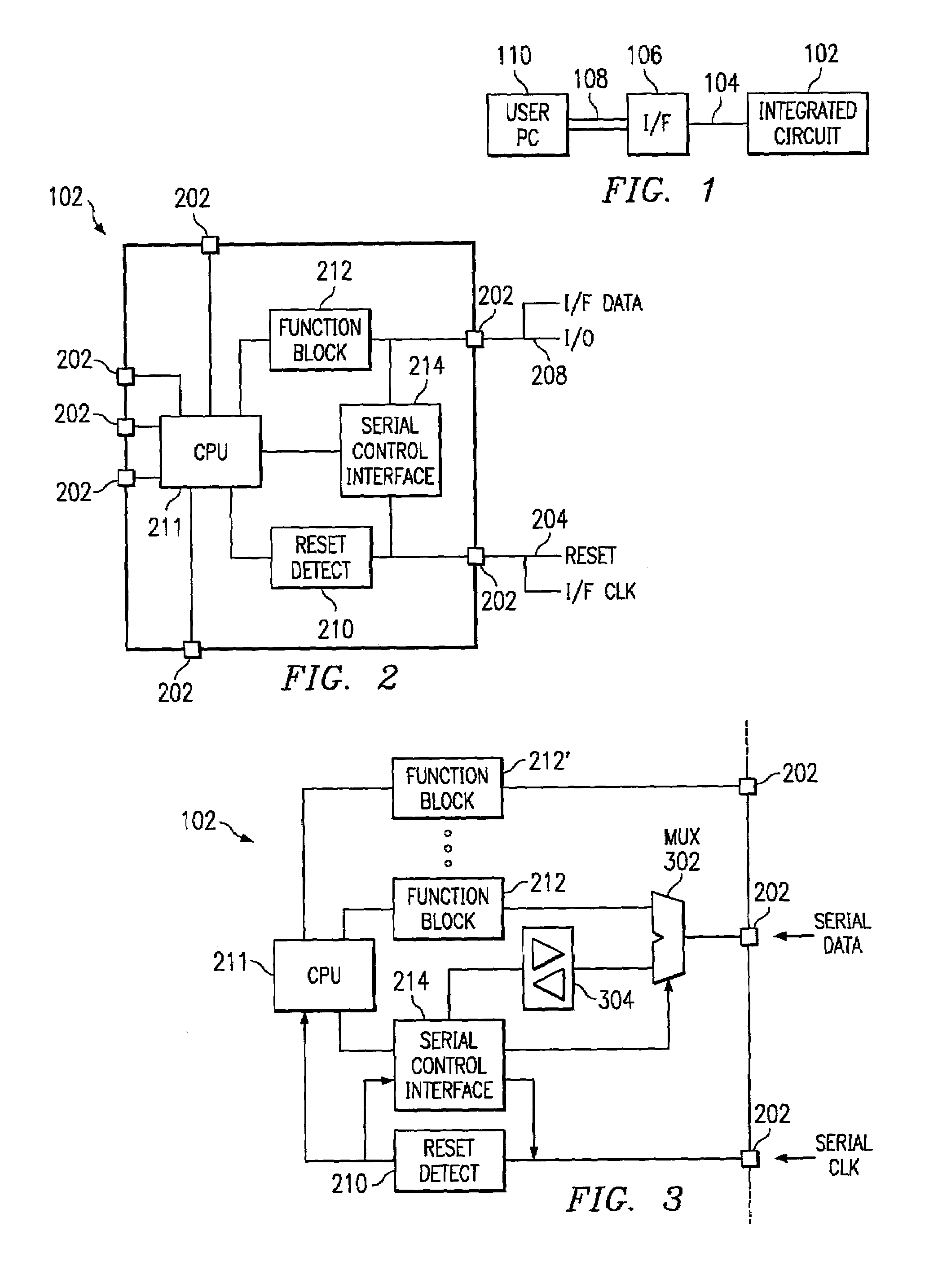Serial data interface
- Summary
- Abstract
- Description
- Claims
- Application Information
AI Technical Summary
Benefits of technology
Problems solved by technology
Method used
Image
Examples
Embodiment Construction
[0027]Referring now to FIG. 1, there is illustrated a diagrammatic view of an integrated circuit 102 having associated therewith interface circuitry for interfacing one or more pins thereof to a serial data bus 104, either one or two wires through a mapping interface block 106—a translator 106. The translator 106 is operable to map a conventional data protocol from a data bus 108 that interfaces with a user PC 110 to the serial data bus 104. The bus 108 can be either a serial data bus such as an RS232 data bus or parallel port. The serial data bus 104 is bi-directional and can be synchronous or asynchronous. In the first disclosed embodiment, this is a synchronous data bus.
[0028]Referring now to FIG. 2, there is illustrated a diagrammatic view of one embodiment of the present disclosure. The integrated circuit 102 is illustrated as having multiple pins 202 associated therewith, two of which are associated with the serial data interface. In this exemplary disclosure, one of the pins ...
PUM
 Login to View More
Login to View More Abstract
Description
Claims
Application Information
 Login to View More
Login to View More - R&D
- Intellectual Property
- Life Sciences
- Materials
- Tech Scout
- Unparalleled Data Quality
- Higher Quality Content
- 60% Fewer Hallucinations
Browse by: Latest US Patents, China's latest patents, Technical Efficacy Thesaurus, Application Domain, Technology Topic, Popular Technical Reports.
© 2025 PatSnap. All rights reserved.Legal|Privacy policy|Modern Slavery Act Transparency Statement|Sitemap|About US| Contact US: help@patsnap.com



